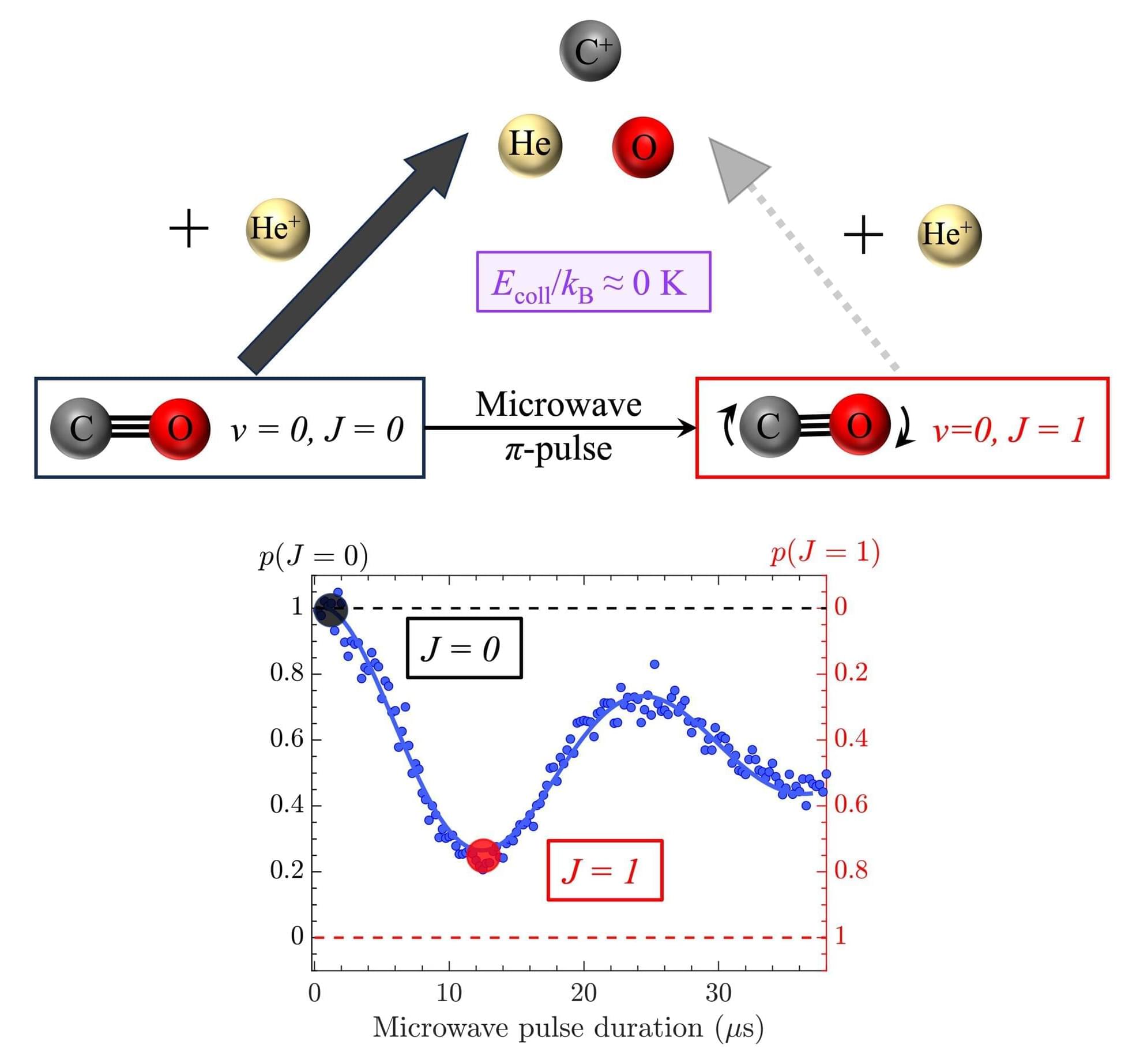A key objective of ongoing research rooted in molecular physics is to understand and precisely control chemical reactions at very low temperatures. At low temperatures, the chemical reactions between charged particles (i.e., ions) and molecules unfold with highly rotational-state-specific rate coefficients, meaning that the speed at which they proceed strongly depends on the rotational states of the involved molecules.
Researchers at ETH Zürich have recently introduced a new approach to control chemical reactions between ions and molecules at low temperatures, employing microwaves (i.e., electromagnetic waves with frequencies ranging from 300 MHz to 300 GHz). Their proposed scheme, outlined in a paper published in Physical Review Letters, entails the use of microwave pulses to manipulate molecular rotational-state populations.
“Over the past 10 years, we have developed a method with which ion-molecule reactions can be studied at very low temperatures, below 10 K, corresponding to the conditions in giant molecular clouds in the interstellar medium, where these types of reactions play a key role,” Valentina Zhelyazkova, corresponding author of the paper, told Phys.org.
